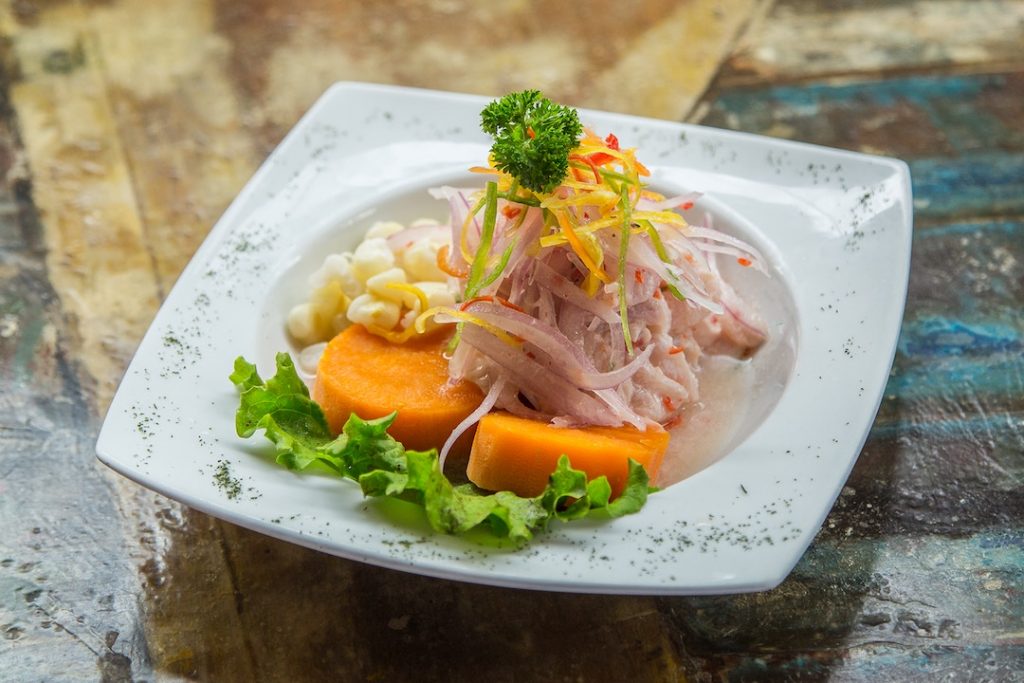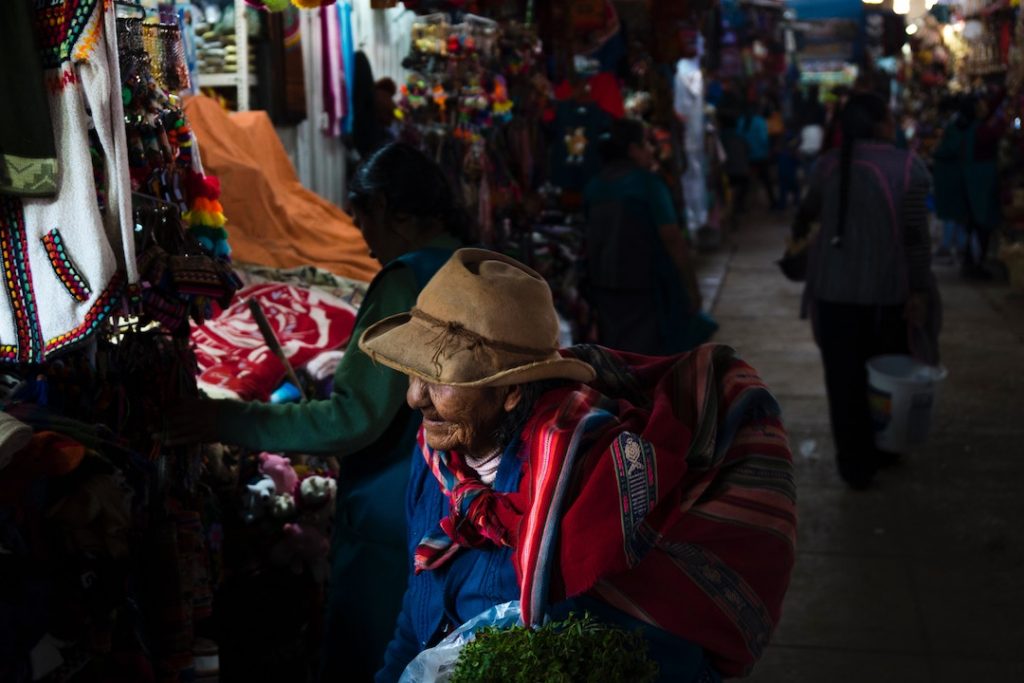This story was created in partnership with: Visit Peru
Machu Picchu is one of the New Seven Wonders of the World for a reason but there’s so much more to Peru than its busiest landmark. You can’t even begin to imagine how rich the country is in history, culture, food, and nature. Immerse yourself in Peru’s wealth by shedding sweat and tears for the views in the Sacred Valley, by flexing your taste buds on a fresh aji chilli pepper, and by listening to nature’s symphony all night long in the Amazon Jungle. No ancient citadel can give you all of this in the way that the rest of the country can.
Gastronomy in Lima
From the moment you step out of the airport in Lima and feel the damp salty air on your face — a sensation made possible by the Pacific Ocean — anyone that loves the taste and smell of cities by the sea is instantly hooked. The presence of the ocean is two-fold, it provides Lima with character and fresh bounty.
When people think of food and drink in Peru, pisco sours and ceviche come to mind first, and Lima is ideal for such pursuits. You could easily spend a week in the Peruvian capital devouring plates of ceviche made from local fish and walking off your gluttony by exploring hip neighbourhoods like Barranco and Miraflores or along the length of the Malecón. But why stop at ceviche when some of the world’s best chefs are taking ancient Inca food staples to the next level?
In a 2008 Bon Appetit article, writer Daniel Duane pointed out that without Peru’s discovery of ingredients and excavation of flavour, Italy would be without tomatoes, France without foie gras (“the Inca domesticated the fowl”), Switzerland would have no chocolate, and without potatoes, Ireland would have starved. For over a decade now, Lima has been the best place to discover modern cooking methods fused with local produce. Throughout Lima’s culinary evolution, chefs have been vocal about their efforts to reflect and preserve Peru’s culture and heritage (while turning things up a notch).
You can’t really experience gastronomy in Peru without the potato. There are over 4,000 kinds of potato in Peru, and in Lima, chefs are transforming this ingredient into dishes that will your tastebuds will always remember.

You can re-discover the fleshy orange sweet potato which is often served alongside ceviche as a doughnut that comes sweetened with honey. In the kitchen of the restaurant Central, Virgilio Martinez — one of many famous chefs who have been instrumental in putting Peru on the culinary map — has become renowned for his love of the potato and dishes he makes out of this ingredient. Martinez applies numerous cooking methods beyond the ordinary to the potato, and he’s even been known to use them in cacao desserts and potato skins for broths and ice cream.
Adventure off-the-beaten-path in the Sacred Valley
Over thousands and thousands of kilometres worth of trails snake through the dramatic landscape of the Peruvian Andes. The only way to access this remote scenery is to explore the Sacred Valley on foot by walking along the pathways that were left behind by the ancient Inca civilisation.
When you consider how much untapped raw beauty lies in this region, it’s mind-boggling that most travellers only hanker after permits for the official Inca Trail. It may be the most famous, but by no means is it the most breathtaking.

My first real camping and hiking experience was in Peru, and in this country, you don’t just hike. You also sleep under the stars and wake up in the clouds, you eat local food cooked thousands of metres above sea level and take advice from Quechuan sorcerers. When you opt for alternate hiking trails, instead of meeting tourists on the official Inca Trail you’ll meet more locals, discover lesser-known ruins and natural wonders that haven’t done the rounds on Instagram.
For something other than the Inca Trail, look to the Lares Trek which will take you to the Inca lands in the Andes and through picturesque Peruvian villages or take the trail to Choquequirao Archaeological Park or walk to the Pisac ruins to marvel at more cities left behind by the Inca.
Inca history in the cobblestone streets of Ollantaytambo
This village may be cute but it’s tougher than it looks. When the Spanish invasion came to Peru, Ollantaytambo served as the last stronghold for the leader of the Inca resistance. In 1537, it was from here that Inca Manco Yupanqui fought back Spanish colonizers. For most travellers, this small village is a popular pitstop and place to catch a train to Agua Calientes so they can get to you know where.
If you want to see the mastery of Inca city planning, then Ollantaytambo is one of the finest preserved examples. The architecture and cobblestone streets date back to the 13th century, and when they aren’t crawling with tourists and hikers, will make you feel as if you’ve opened a doorway to days gone by.
This is not a place to rush through. The village harbours several Inca ruins from Temple Hill to storehouses and quarries, so you could easily spend several days immersing yourself in surviving architectural marvels and enjoying Ollantaytambo’s old-world charm.
Peru’s nature is out of this world
On one hand, you have the soaring heights of the Andes and on the other, the Peruvian Amazon, and between both of these spectacular extremes, more extraordinary encounters with nature. Where to start? Well, no one does sand quite like Peru.
Picture if you will, a highly-developed looking desert oasis tucked away at the foot of a dune. Huacachina looks like a mirage, but blink and you’ll see it’s really there. A cluster of homes and palm trees come together around a central pond. This tiny settlement is flanked by dunes that beckon adrenaline seekers with the promise of sand boarding and dune buggy rides. At sunset, the summit of Cerro Blanco — the tallest dune in the world — is the only place to be.
Vinicunca or Rainbow Mountain is another of Peru’s wonders that doesn’t look real. Only a day trip from Cusco, this phenomena has been doing the rounds on Instagram, but seeing the eerie glow of the sun beaming down on the intricate colourful layers is worth the day trip from Cusco.

For more wow moments, visit the Uros Floating Islands. Located on Lake Titicaca, on the border of Bolivia and Peru, the Uros people have lived on these man-made floating homes for many generations. If you enjoy mythology, then it might interest you to know that Lake Titicaca is believed to be the birthplace of the Inca.
And if you thought the Amazon Jungle was only a haven for otherworldly biodiversity, think again. Along with a complicated ecosystem and heaven knows how many species, this colossal mass of rainforest is home to hundreds of indigenous tribes, protected national reserves such as Pacaya Samiria and the ruins of Kuelap which are older and even more fascinating than a certain ancient citadel.
High-altitude culture
Culture comes easily to Peru. The magic lies in how diverse it is, from one landscape to another, city to city, from each region to the next. In Lima, just walking down the historic streets, or watching the surfers — or better yet joining them — yields a taste of Peru’s heritage and evolving culture.
Then there are the community experiences in the Sacred Valley where you learn about traditions that have been passed from one generation to another. We cooked potatoes and meat on hot stones in a bed of fragrant herbs. I learnt how the blood of crushed native bugs can be turned into a bright red dye for alpaca wool and an all-natural lipstick, and the flesh of a plant can be used to make soap on the spot. And while this was a once-in-a-lifetime experience, Cusco was the city that made me fall in love with Peru.

From steeping coca leaves to beat the altitude gain to roaming the market lanes for potions, and eating chifa, Cusco is rich with billionaire levels of heritage and culture. It also happens to be the Inca capital, so you can continue to trace the history of this ancient civilisation. Follow their story by exploring temples, wandering Cusco’s cobblestone streets and being respectful of their reverence for Pachamama (Mother Nature).
Ready to go on your own Inca adventure in Peru? Discover their story in destinations like Lima, Cusco, Lake Titicaca, and Ollantaytambo. Explore our wide selection of tours now!


